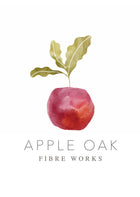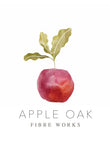🎁 AppleOak FibreWorks Gift Card
Regular price
€10,00
Save €-10,00
Not sure what to give?
Not sure what to give?
An AppleOak Gift Card is the perfect choice — simple, thoughtful and always appreciated.
Let your recipient choose from our full range of naturally dyed textiles, fibres, fabrics, dye kits, books, tools, socks, workshops and more.
Easy to use and delivered instantly, it’s the ideal present for makers, dyers and textile lovers.
✨ Why Choose an AppleOak Gift Card?
-
Instant digital delivery
-
Redeemable on everything in the AppleOak shop
-
No expiry date
-
Perfect for Christmas, birthdays, or creative surprises
-
Flexible amounts to suit every budget
Give the gift of colour, craft, and sustainable creativity.










































































